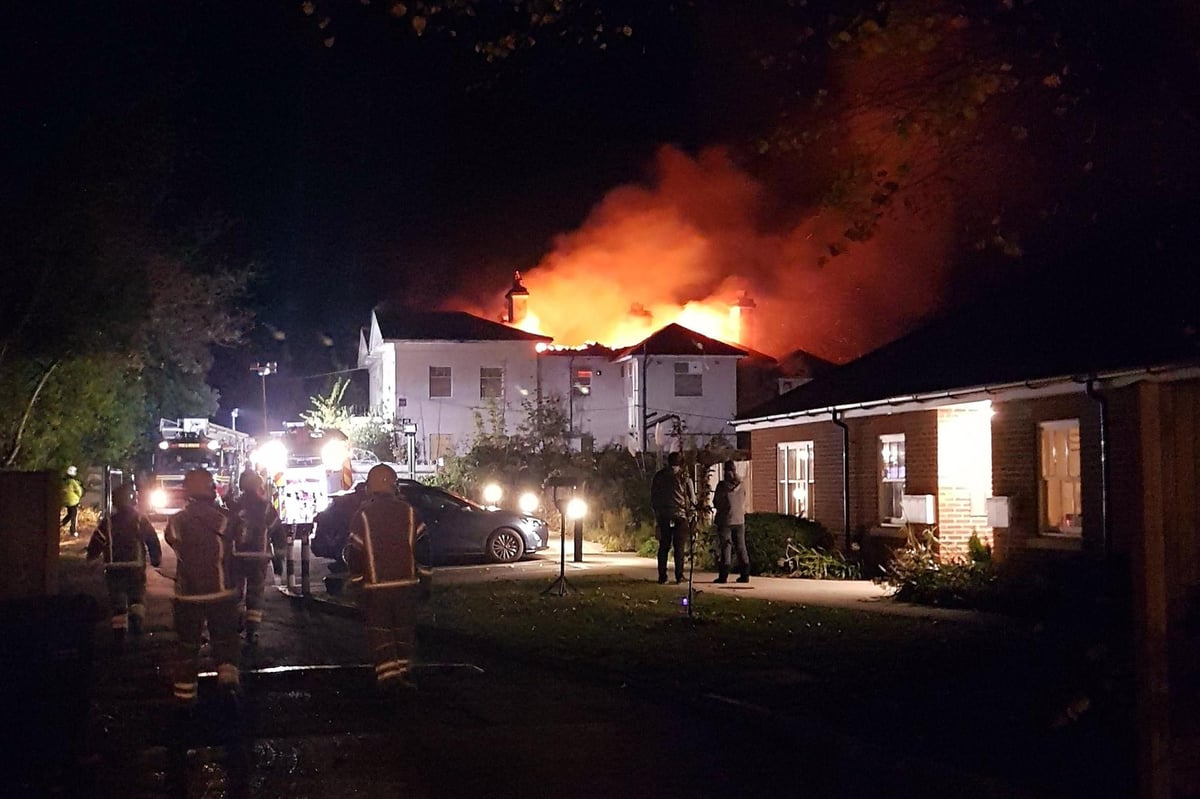This place cropped up on here under a different name a few months back, and it piqued my interest as I thought there must be more to it - and I was right. I've got a real love of exploring former QinetiQ sites, I think this is the fourth one I've done in England now and there are still a couple I'm yet to crack.
QinetiQ Alverstoke was a former defence research facility primarily concerned with the development of naval safety systems. The majority of the experiments and tests conducted here revolved around the effects of high pressures on both animal and willing human participants, and went towards furthering development of 'safe escape strategies' for submariners forced to leave their vessels underwater quickly. The animals in question were goats as their internal physiology was apparently very similar to that of humans when it comes to the lungs and tissues etc, they were kept on site and subjected to high pressure tests inside a large hyperbaric chamber which used to be in the centre of one of the larger buildings. Those that died were then taken across the site to a clinical laboratory building where dissections and examinations would have occurred, which is the most intact building out of them all. Experiments were also performed on willing human subjects in two large deep trial dive pools located in two of the buildings, back in the days before QinetiQ the site was part of DERA - the Defence Evaluation and Research Agency - and came under their Centre for Human Sciences umbrella.
In 2007 animal rights activists campaigned to get QinetiQ to halt the use of animals in the experiments, and this did ultimately succeed. The facility closed down in 2011 and all the equipment was transferred to a new site in nearby Haslar where similar research and development is conducted to this day.
The weather this day was absolutely abysmal, it's up there in the worst weather I've ever explored in but it gave the whole place a real atmosphere as due to the rain and wind nothing inside was quiet, everything was banging and blowing around and it was pretty cool. We spent around three hours there and covered every building, and it's one of the most enjoyable explores I've had for some time. Considering it closed nearly a decade ago the damage is surprisingly limited mostly to just a lot of broken windows, there's almost no graffiti at all.


























Cont....
QinetiQ Alverstoke was a former defence research facility primarily concerned with the development of naval safety systems. The majority of the experiments and tests conducted here revolved around the effects of high pressures on both animal and willing human participants, and went towards furthering development of 'safe escape strategies' for submariners forced to leave their vessels underwater quickly. The animals in question were goats as their internal physiology was apparently very similar to that of humans when it comes to the lungs and tissues etc, they were kept on site and subjected to high pressure tests inside a large hyperbaric chamber which used to be in the centre of one of the larger buildings. Those that died were then taken across the site to a clinical laboratory building where dissections and examinations would have occurred, which is the most intact building out of them all. Experiments were also performed on willing human subjects in two large deep trial dive pools located in two of the buildings, back in the days before QinetiQ the site was part of DERA - the Defence Evaluation and Research Agency - and came under their Centre for Human Sciences umbrella.
In 2007 animal rights activists campaigned to get QinetiQ to halt the use of animals in the experiments, and this did ultimately succeed. The facility closed down in 2011 and all the equipment was transferred to a new site in nearby Haslar where similar research and development is conducted to this day.
The weather this day was absolutely abysmal, it's up there in the worst weather I've ever explored in but it gave the whole place a real atmosphere as due to the rain and wind nothing inside was quiet, everything was banging and blowing around and it was pretty cool. We spent around three hours there and covered every building, and it's one of the most enjoyable explores I've had for some time. Considering it closed nearly a decade ago the damage is surprisingly limited mostly to just a lot of broken windows, there's almost no graffiti at all.
Cont....



